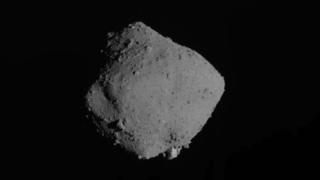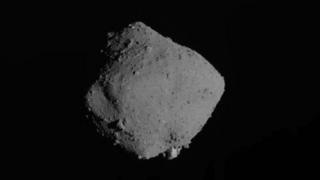Hayabusa-2: Japan spacecraft leaves asteroid to head home
Hayabusa-2 will return with samples of the asteroid after its yearlong journey back to Earth. …

 Image copyright Jaxa/AFP
Image copyright Jaxa/AFP Japan’s Hayabusa-2 spacecraft has departed from a faraway asteroid and begun its yearlong journey back to Earth.
The spacecraft left its orbit around Ryugu on Wednesday with samples of the asteroid in tow.
Hayabusa-2 is expected to return to Earth in late 2020, completing its successful multi-year mission.
Japan’s space agency, Jaxa, said the collected samples could shed light on the origins of the Solar System.
Hayabusa-2 first launched in 2014. Three and a half years later, it reached the asteroid Ryugu, located about 300 million km (190 million miles) from Earth.
Following its arrival in June 2018, the spacecraft made touchdowns twice, collecting data and rock samples from the Ryugu – a primitive space rock leftover from the early days of the Solar System.

Media playback is unsupported on your device
The first touchdown – which happened in February – included firing a “bullet” into the rocky surface to kick up rock samples, which were then caught by the sampler horn that extends from the bottom of the spacecraft.
The second touchdown happened in July, after the Hayabusa-2 first “bombed” the asteroid to create an artificial crater. Later, it returned to land in the crater and collect the fresh rubble, including rock samples from beneath the surface.
Scientists believed these would be more pristine samples, since they would not have been exposed to the harsh environment of space. They were the first underground samples collected from an asteroid in space history.
The Hayabusa-2 is expected to return to Earth in December 2020, dropping a capsule containing the rock samples in the South Australian desert.
The yearlong return journey is much shorter than the three and a half years it took the spacecraft to reach Ryugu, thanks to the asteroid now being much closer to Earth than it was in 2014.
While asteroids are some of the oldest objects in space, Ryugu belongs to a particularly primitive type of space rock, and may contain clues about the conditions and chemistry of the early days of the Solar System – some 4.5 billion years ago.


